Web Site: www.rd-alpaca.com
The knocking at the door woke me up.
It was an Indian bringing me chicken and rice soup.
Why? ‘Cause I had
gotten up close and personal with an amoeba a few days before. But I
digress. Let me go back a week and start in Lima.
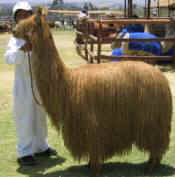 Ulla and I (and two other couples) arrived in Lima, Peru
at the beginning of our journey to the annual Alpaca Fiesta being
held in Arequipa. All of us
are good friends and alpaca breeders in upstate New York.
We thought it would be a fun and educational trip to visit the
homeland of these wonderful animals we have all decided to raise and sell.
Plus, there was to be a round-up of vicuna that was held once every
two years. And, Machu Picchu,
the famous Inca ruin was begging to be explored.
Ulla and I (and two other couples) arrived in Lima, Peru
at the beginning of our journey to the annual Alpaca Fiesta being
held in Arequipa. All of us
are good friends and alpaca breeders in upstate New York.
We thought it would be a fun and educational trip to visit the
homeland of these wonderful animals we have all decided to raise and sell.
Plus, there was to be a round-up of vicuna that was held once every
two years. And, Machu Picchu,
the famous Inca ruin was begging to be explored.
Lima
is a city of over 7 million people. Much
larger than I had first thought. Founded
in 1535 by Pizarro (of Conquistador fame), it is a sprawling city trapped
between the Andes and the Pacific. We spent two days with a guide learning
about the city, its history and the Spanish conquest of South America.
One of the main lessons learned is that South America has a very
rich and old history that is neglected by our education system.
After this introduction to Peru we were in a hurry to get on with
our trip. So, the third day
we boarded an airplane and an hour later arrived in Arequipa.
Flying
over the south western portion of Peru it became evident that this is a
very dry place. As a matter
of fact the southern coast of Peru is one of the driest places on earth.
But, we weren’t prepared for the 10,000 foot altitude when we
deplaned. You can read about
it, talk to others about it but when you pick up your bags and try to hoof
it to your waiting taxi you realize there isn’t much air at that
altitude.
Once
we all got settled in at our hotel (and like all hotels they have both
oxygen and coca tea available to help you while you adjust to the
altitude) we took the day to explore our surroundings.
One of the first things you become aware of is the damage the June
2001 earthquake did to this city. Two
years later and the city is still rebuilding.
It will take many more years to repair the damage to the housing.
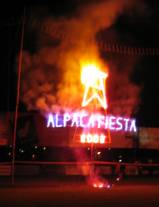
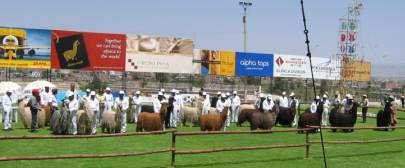 The
day of the Fiesta arrived and we all were there for the opening ceremonies
(lots of fireworks in the evening). There
were alpaca breeders from all over the world along with hundreds of
alpacas brought in by Peruvian breeders for judging.
It was interesting to see how different groups valued different
features of the animal. Here
in the States we put a lot of emphasis on “crimp” in the fiber whereas
the Peruvians do not. The
Australians see the alpaca as a fiber animal whereas Americans view them
as an investment along with a fiber producer. I came away feeling we American breeders need to take a hard
look at our values.
The
day of the Fiesta arrived and we all were there for the opening ceremonies
(lots of fireworks in the evening). There
were alpaca breeders from all over the world along with hundreds of
alpacas brought in by Peruvian breeders for judging.
It was interesting to see how different groups valued different
features of the animal. Here
in the States we put a lot of emphasis on “crimp” in the fiber whereas
the Peruvians do not. The
Australians see the alpaca as a fiber animal whereas Americans view them
as an investment along with a fiber producer. I came away feeling we American breeders need to take a hard
look at our values.
 One of the highlights of the Fiesta was the vicuna roundup called chaco.
The vicuna is a non-domesticated cousin to the alpaca.
A small, delicate camilid, the vicuna is a protected animal whose
fleece is very valuable. The
local Indians are the only people allowed to shear and sell the fiber
which, when just off the animal, sells for over $500/kilo (2.2 pounds).
However, the fiber grows very slow so they are sheared only every
two to three years.
One of the highlights of the Fiesta was the vicuna roundup called chaco.
The vicuna is a non-domesticated cousin to the alpaca.
A small, delicate camilid, the vicuna is a protected animal whose
fleece is very valuable. The
local Indians are the only people allowed to shear and sell the fiber
which, when just off the animal, sells for over $500/kilo (2.2 pounds).
However, the fiber grows very slow so they are sheared only every
two to three years.
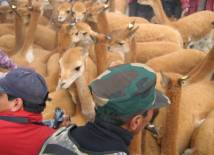
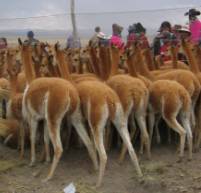
There were about 100 visiting alpaca breeders brought out to help with the roundup. When we got off the buses we realized again the altitude, now 13,500 feet, was not our friend. As we stretched out we walked along herding the vicunas back and forth to tire them out (I think the vicunas really had the last laugh – you should have seen the breeders). There were coca leaves aplenty for everyone who wanted them. People chew the leaves to help deal with the altitude and the fatigue it brings about. Quite bitter but very effective.
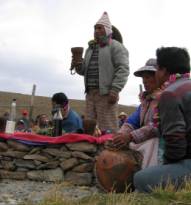 After the vicunas were in their holding pens the natives had a religious
ceremony blessing the herd and praying for a fertile breeding season.
It was quite moving to see how the animals were valued and cared
for.
After the vicunas were in their holding pens the natives had a religious
ceremony blessing the herd and praying for a fertile breeding season.
It was quite moving to see how the animals were valued and cared
for.
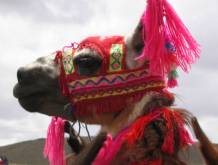 We then went onto have a shearing demonstration, and a closing ceremony that
involved lots of music and dancing along with llamas decorated in their
finest outfits.
We then went onto have a shearing demonstration, and a closing ceremony that
involved lots of music and dancing along with llamas decorated in their
finest outfits.
Back
in Arequipa both Ulla and I felt a little strange in the stomach.
One of the other people had been quite sick for a couple of days
when he finally went to a local clinic.
Seems he had gotten an amoeba infection from eating food handled by
someone not washing their hands (we were all quite careful about what we
were eating but this isn’t something you can avoid).
So we decided to get ourselves to the clinic before we were to
leave the next morning for the Colca Valley.
Without going into the sordid details of how one finds out - we
both had an amoeba infection. Ulla got a pill to take and was fine. However, I spent the next day sleeping in the back of our van
(I’m still not sure what was in the shot the nurse gave me) and in the
evening our guide arranged for the chicken and rice soup. Chicken soup works wonders even south of the equator.
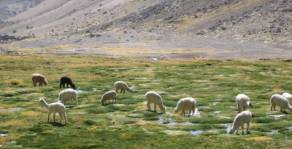 One of the world’s deepest gorges is the Canyon del Colca.
The Colca is deeper than the Grand Canyon and is shadowed by
snow-topped peaks – many of them volcanoes – and cut through by the
Rio Colca. On the way out of
the canyon (I didn’t get to see much on the way in) the Inca’s impact
could be seen everywhere. The
walls of the canyon are covered with terraces that have been in use for
over a 500 years. The Incas
perfected irrigation systems that their predecessors had developed
to bring water far distances to irrigate crops.
One of the world’s deepest gorges is the Canyon del Colca.
The Colca is deeper than the Grand Canyon and is shadowed by
snow-topped peaks – many of them volcanoes – and cut through by the
Rio Colca. On the way out of
the canyon (I didn’t get to see much on the way in) the Inca’s impact
could be seen everywhere. The
walls of the canyon are covered with terraces that have been in use for
over a 500 years. The Incas
perfected irrigation systems that their predecessors had developed
to bring water far distances to irrigate crops.
There
were herds of alpacas, grazing on the grasses that make up much of this
part of Peru. It was nice to
see them in their native environment.
In America, the alpacas have green grass 5-7 months of the year. In the Andes they have it for only 2 months.
No wonder our alpacas tend to be overweight.
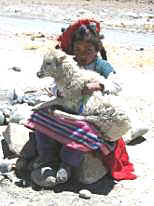 Along
the way to the airport we met this young girl wanting to show off her pet
lamb.
Along
the way to the airport we met this young girl wanting to show off her pet
lamb.
Cusco, ancient capital of the Inca Empire, is at 11,000 feet and we were
at home at the altitude now. There
is so much history centered in this area that there isn’t time enough to
write it. Suffice it to say
the Incas built their capital in Cusco because Manco Capac and Mama Ocllo,
at the command of the sun god Inti, found a spot where their gold staff
could sink into the ground. The
Plaza de Armas was, in Incan times, the exact center of the empire.
Today there is the magnificent Cathedral on one side of the plaza.
It was begun in 1559 and took a century to build.
The alter is solid silver. On
one wall there is a large painting of the Last Supper by Marcos Zapata
with Christ and his apostles dining on roast guinea pig, hot peppers and
Andean cheese. The purpose
was to bring local culture and European ideas together to make the new
religion more palatable to the native population.
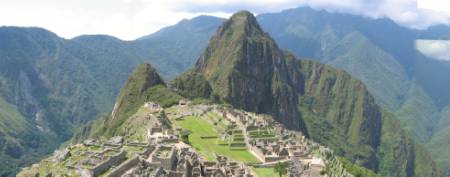 A 3½ hour train ride brought us down to the edge of the jungle and
Machu Picchu – Ancient Peak. This
was the highlight of the trip for me.
Ever since I was a boy I have read about this awe inspiring ruin
that was discovered by Hiram Bingham in July 1911.
As one of our guides told us, there are as many theories of how and
why there is a Machu Picchu as there are historians.
The Incas didn’t leave a written record so it is up to modern man
to slowly piece together the story. Much
has been discovered since 1985 and I’ll leave it to those interested to
search it out. It will make
interesting reading, I assure you. I’ll
just let a few pictures capture the beauty and mystery.
The question raised, amongst many, was how did the Incas manage to
handle such large and heavy stones?
A 3½ hour train ride brought us down to the edge of the jungle and
Machu Picchu – Ancient Peak. This
was the highlight of the trip for me.
Ever since I was a boy I have read about this awe inspiring ruin
that was discovered by Hiram Bingham in July 1911.
As one of our guides told us, there are as many theories of how and
why there is a Machu Picchu as there are historians.
The Incas didn’t leave a written record so it is up to modern man
to slowly piece together the story. Much
has been discovered since 1985 and I’ll leave it to those interested to
search it out. It will make
interesting reading, I assure you. I’ll
just let a few pictures capture the beauty and mystery.
The question raised, amongst many, was how did the Incas manage to
handle such large and heavy stones?
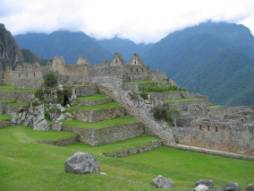
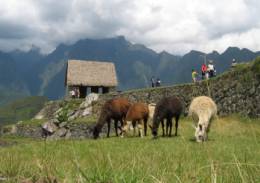
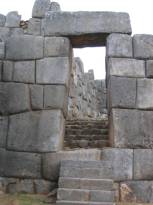
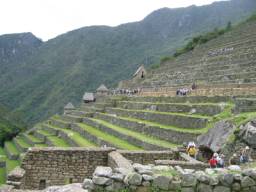
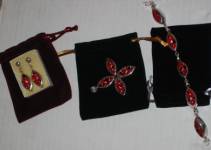 When
we left Machu Picchu we had one last day in Cusco. It was time to
find things for our shop back on the farm. Ulla spent quite a bit of
time negotiating for that one of a kind sweater and handmade jewelry.
Me? I did what most husbands do at times like that – I hid.
When
we left Machu Picchu we had one last day in Cusco. It was time to
find things for our shop back on the farm. Ulla spent quite a bit of
time negotiating for that one of a kind sweater and handmade jewelry.
Me? I did what most husbands do at times like that – I hid.
Since we have been back I have had time to reflect on what we had seen. The main purpose of our trip was to see the land of the alpaca and learn more about their husbandry. It turned out that what I learned was how intertwined these animals were and are to the culture, history and religion of the South American Indian. We think of the Inca as the group that did so much but they were only around for about 500 years. The alpaca was domesticated 7,000 years ago. Who were those who came before the Inca on whom the Inca built all they did? Before going to Peru I never gave it a thought. Now I realize the Inca, as progressive as they were, were just the top of the pile that was begun generations and generations before. Learning never ends.

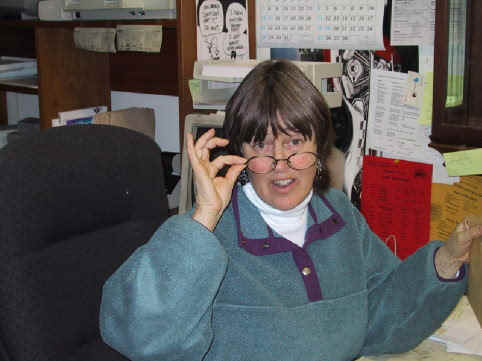
Richard Jonassen Ulla Jonassen
 Rain
Dance Pond, the Jonassen's home and 175 acre spread.
Rain
Dance Pond, the Jonassen's home and 175 acre spread.
Click the picture to visit their web site!